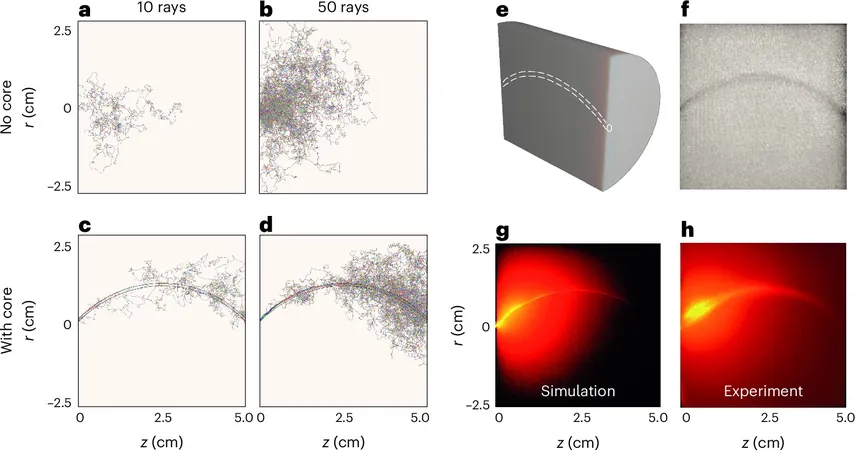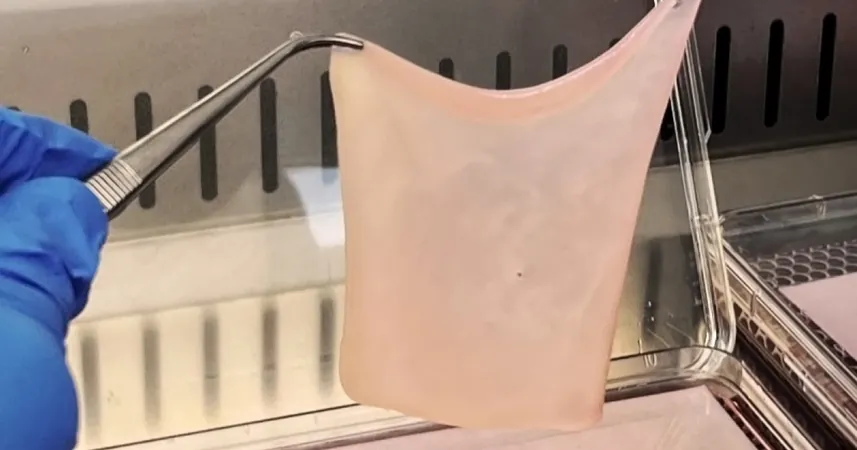
Did Predatory Birds Spark a Flight Revolution in Cicadas? The Evolutionary Race Unveiled!
2024-10-25
Author: John Tan
Groundbreaking Study on Cicada Evolution
A groundbreaking new study hints that the rapid evolution of cicadas' flight capabilities may have been significantly influenced by the rise of predatory birds over millions of years.
Research Findings
According to the research published in *Science Advances*, cicadas, particularly those from the giant Dunstaniidae and Palaeontinidae families, underwent remarkable transformations in their body and wing structures during a 160 million-year timeline. This evolution coincided with the reign of birds as apex aerial hunters, suggesting a fascinating evolutionary 'arms race.'
The study revealed that cicadas from the early Cretaceous period experienced an astounding 39% increase in speed and developed 19% more flight muscle mass compared to their late Jurassic predecessors. This rapid advancement implies a direct response to the emerging threat from birds, highlighting the significant impact of predation on insect evolution.
Insights from Experts
Paleontologist Chunpeng Xu, the lead author of the study, explained that the unique formation of giant cicadas provides valuable insights into the intricacies of wing evolution. Wings, having independently evolved at least four times in various species, is a complex subject due to the rarity of fossilized wings. Xu elaborated on the challenges of studying the flight capabilities of extinct species, stating that ancient cicadas present a rare opportunity, with over 80 well-documented species available in the fossil record.
Methodology
Utilizing cutting-edge analysis techniques, the research team meticulously mapped over 300 data points on cicada wings to trace evolutionary changes. They discovered that longer, more streamlined wings, coupled with an increase in muscle mass, significantly improved cicadas' flying efficiency, allowing them to evade early avian predators.
Early Birds and Cicadas
Did you know that birds that emerged around 150 million years ago were not just simple insect consumers? Many early birds had specialized anatomical features, including short, toothed jaws and wide mouths tailored for catching insects among tree branches, making them particularly adept at snatching cicadas mid-flight.
Criticism and Caution
Despite the impressive findings, critics like UCLA's paleobiologist Michael Habib urge caution. While the study's evidence for increased speed is compelling, Habib raised concerns about whether these cicadas could also maneuver effectively given that greater speed often limits agility. Nonetheless, he commended the authors for their ambition in investigating such complex aerodynamic relationships, which could provide valuable applications in fields like robotics.
Conclusion
In summary, this research not only unravels the intricate history of cicada evolution but also emphasizes how the dynamics between predator and prey can shape entire species over epochs. The next time you hear the unmistakable buzz of a cicada, remember that its ancestors might have been racing against the clock to escape the jaws of their prehistoric foes!


 Brasil (PT)
Brasil (PT)
 Canada (EN)
Canada (EN)
 Chile (ES)
Chile (ES)
 España (ES)
España (ES)
 France (FR)
France (FR)
 Hong Kong (EN)
Hong Kong (EN)
 Italia (IT)
Italia (IT)
 日本 (JA)
日本 (JA)
 Magyarország (HU)
Magyarország (HU)
 Norge (NO)
Norge (NO)
 Polska (PL)
Polska (PL)
 Schweiz (DE)
Schweiz (DE)
 Singapore (EN)
Singapore (EN)
 Sverige (SV)
Sverige (SV)
 Suomi (FI)
Suomi (FI)
 Türkiye (TR)
Türkiye (TR)